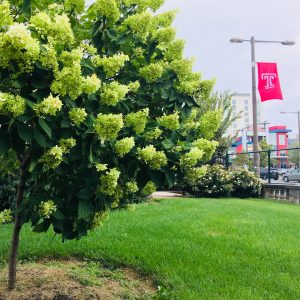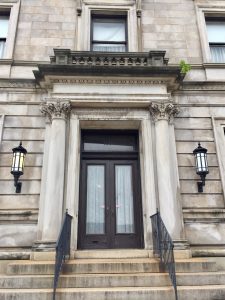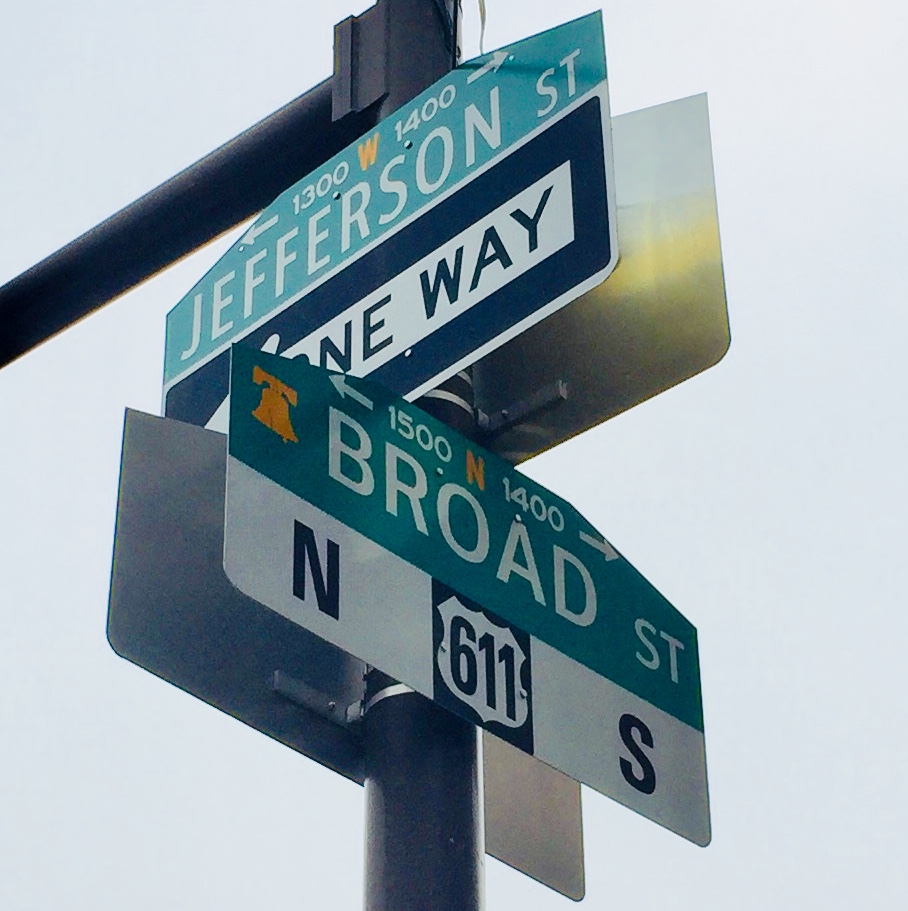Today I find myself at the corner of Jefferson and N. Broad Street in Philadelphia, where an iron fence seperates me from a remnant of America’s Guilded Age. The mansion was designed by architect Edward P. Simon and constructed in 1907 for one of the most prominent leather manufacturers in the world, Alfred E. Burk. The three story, twenty seven room building features elegantly curved exterior limestone walls, columns, and detailed trim work. The property also contains a modest sized lawn and conservatory in the rear.
 Surrounded by a half-demolished church, student apartments, a shopping center, and an assisted living facility, the impressive Burk Mansion may seem out of place to the average passerby. Don’t be fooled by the property’s freshly cut grass and well-maintained flower beds. Purchased by Temple University in 1970, the property was repurposed into a daycare, serving students and community members until an electrical fire prompted its closure and abandonment in 1995. Tweny-five years later, we are not sure what the current state or plans are for the property. Based on statements made by representatives from the university, it seems as if finding a purpose for this slowly eroding historic property is of minimal priority.
Surrounded by a half-demolished church, student apartments, a shopping center, and an assisted living facility, the impressive Burk Mansion may seem out of place to the average passerby. Don’t be fooled by the property’s freshly cut grass and well-maintained flower beds. Purchased by Temple University in 1970, the property was repurposed into a daycare, serving students and community members until an electrical fire prompted its closure and abandonment in 1995. Tweny-five years later, we are not sure what the current state or plans are for the property. Based on statements made by representatives from the university, it seems as if finding a purpose for this slowly eroding historic property is of minimal priority.
Students from Temple’s Center for Public History, including myself, are now faced with the task of researching the history and significance of the Burk Mansion, as well as suggesting potential ideas for the future of the property. As I visit 1500 North Broad for the second time, I have a number of initial thoughts, impressions, and questions about Temple University’s relationship to Burk Mansion.
 It is no big secret that in recent years, Temple has been the center of many heated discussions and controversies concerning gentrification and the displacement of local African American communities. Many argue that Temple shows little concern for neighbors as the university continues to impulsively purchase and develop surrounding blocks.
It is no big secret that in recent years, Temple has been the center of many heated discussions and controversies concerning gentrification and the displacement of local African American communities. Many argue that Temple shows little concern for neighbors as the university continues to impulsively purchase and develop surrounding blocks.
When I look at the current property in relation to its surroundings, I can’t help but to imagine the era in which Burk Mansion was constructed. The American Gilded Age (1870-1900), was a time of rapid economic growth, visible wealth, and change in the United States. According to legend, Alfred Burk told architects to spare no expense in designing his home on Broad street.
However, as Mark Twain famously noted, the Gilded Age was indeed gilded in a sense that underneath a very thin layer of wealth and prosperity lay an America devestated by poverty and social issues. I find the Gilded Age symbolism relevant to issues taking place today and the similarity is striking. As Temple continues to expand, the same social, racial, and economic issues continue to impact Philadelphia’s communities. Is the growth and appearance of wealth and progress made by the university simply a metaphorical layer of gilding ignorant of what lays just beneath the surface?
I conclude with the following questions . . .
- What are the needs of Temple’s surrounding communities and how do we identify them?
- Is the expansion of Temple’s domain addressing community needs, or just sweeping them aside?
- How can we, as public historians, use Burk Mansion to bring awareness to the needs and concerns of the surrounding community?
- Can Temple use its growth and resources to serve the community through practical use of this building?
Feel free to comment or ask questions below.
